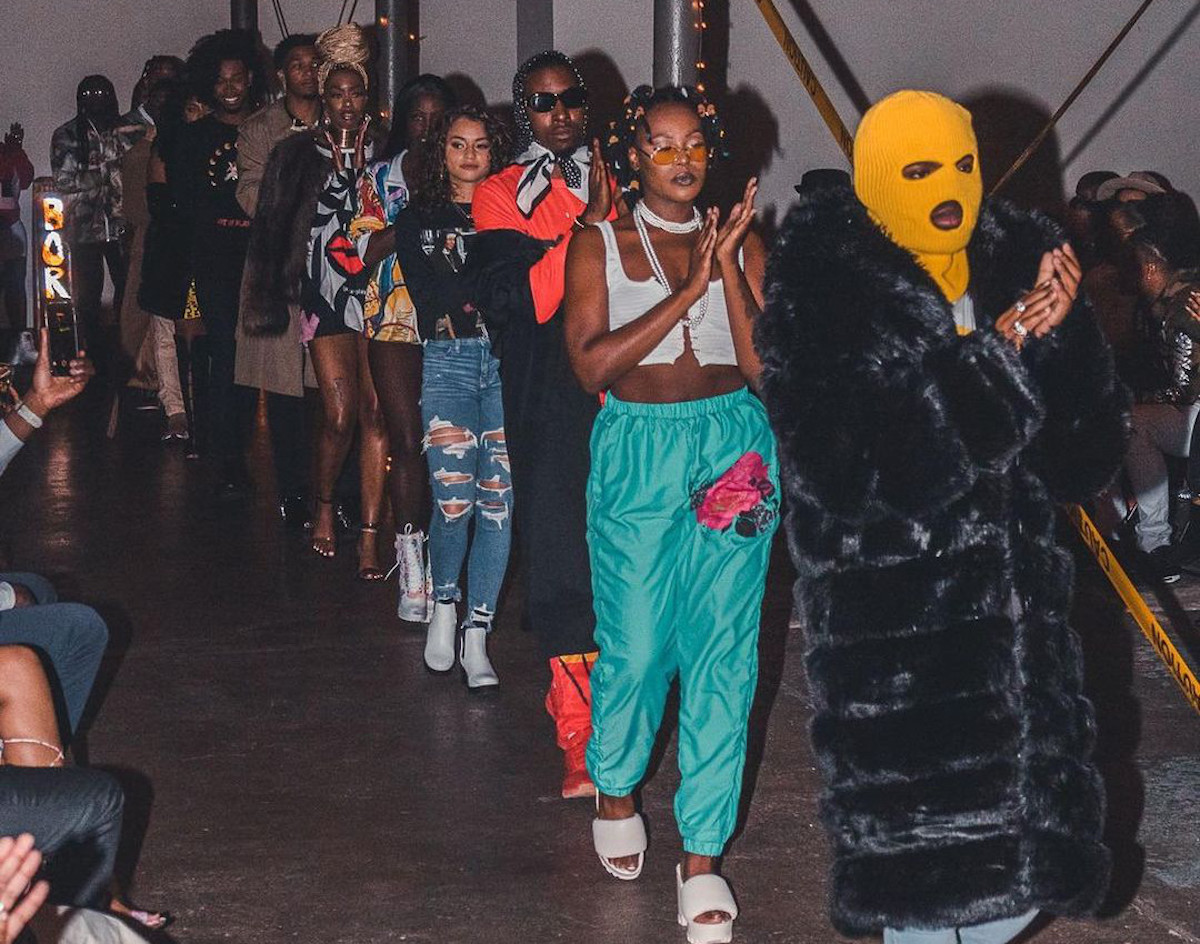Within the Isola Design District, themed around ‘Together as One’ at the ongoing Milan Design Week, the idea behind most of the showcases is to explore the potential of ‘waste’ in creating sustainable futures. Some of the robust contemporary solutions that we saw around product design and biomateriality are born out of things the world deems discarded; new stories that rethink conventions are seen in exhibitions such as No Space For Waste, and Materialized. One more such presentation is Dutch architectural firm UNStudio’s Future Perfect, an exhibition which delves into an extensive textile design archive to create a collection of ‘(extra)ordinary objects’.

UNStudio was invited by Fashion Research Italy Foundation (F.FRI) and YACademy to explore potential design opportunities created by combining patterns from the archive with outdated products left over from manufacturing of Object Carpet and Kvadrat, two collaborators of the project, in addition to Cesare Roversi and DeltaLight. Future Perfect is a three-phased investigation that started with a six week design studio with designers to develop one product, and a spatial collection. The designs culminated into a physical presentation of the collections, on view at the Salone del Mobile, where visitors can get a “glimpse of how fashion patterns can be transformed into an immersive spatial design and how outdated carpet and textiles can take on completely new forms and functions”. The third phase will include the product development of the collections as well as the scaling up of the concept into a meticulous detailed methodology.
In a conversation with UNstudio’s Senior Architect, Melinda Matuz, and Interior Architect Caterina Micucci, STIR discovers more about the process behind curating Future Perfect.
Zohra Khan: Could you describe what was presented to you as the design archive of F.FRI?
Melinda Matuz and Caterina Micucci: Fashion Research Italy Foundation and YACademy invited UNStudio to lead a design studio working with young designers coming from interior, architecture, fashion, and textile design backgrounds to explore the design potential of the F.FRI’s historic fashion archive and collection at the famous Silkin Factory in Milan. UNStudio had the freedom to draw inspiration from more-than-30,000-piece collection and has developed the Future Perfect concept to unlock its potential and highlight the value of the collection by taking an unconventional approach to bring fashion heritage, design and sustainability together.
We visited the archive numerous times, analysed the collection and spoke with F.FRI about the material, what drives the collection and its core values. The prints, textile prototypes, experiments and heritage albums stored in the collection all bring different values when taken as design inspiration. Understanding the development of these highly experiential prototypes was one of the main drivers for our concept.

Zohra: What were some of the leftover products that were extracted from the manufacturing processes?
Melinda and Caterina:Working with outdated products is an essential part of the Future Perfect concept. The chance to give new purpose to the leftover, out of production collections of different products, together with the inspiration from F.FRI’s historic fashion archive gives a completely new meaning to design. We aim to keep the properties of the original products and intertwine them with interpretations of these fashion patterns. The range of products to be used in the concept is not limited to textiles; we imagine Future Perfect being implemented in anything from textile to furniture, visual merchandising, ceramics, interior, and lighting design. The Future Perfect Design Studio and exhibition at the Milan Design Week, however, is concentrated on working with carpets and textiles based on our collaboration with Object Carpet and Kvadrat. Out-of-production collections of textiles and carpets were used to design a spatial installation as a visual interpretation of the concept. At the same time, the teams of designer developed two collections: one on the product scale, another on the spatial scale using Kvadrat textiles and Object Carpet carpets.
Zohra: Could you talk about the aesthetics of the historic prints which you worked with?
Melinda and Caterina: For both the design studio and the exhibition, we landed on working with textile patterns designed in the 1930s, which are part of the historic album collection of the archive. The geometric patterns, in some case combined with floral, natural forms, captured our attention in terms of their layers, scales and hidden dimensionality. When analysing the patterns, we aimed to enhance their spatial properties through our design; the patterns then move from decorative ornament to become the driver of the design.
Zohra: What have you anticipated people’s response to the collection would be?
Melinda and Caterina: We would like to surprise people with our installation and invite them through a journey where they can understand the value of designing with leftovers while additionally bringing fashion heritage into spatial design. The immersive spatial experience is meant to trigger an emotional reaction and hopefully bring more consciousness about the real meaning of working with heritage patterns and sustainability. The beauty of the installation is in its simplicity which combines the original values of our inspiration and mediums, and creates a completely new meaning.
STIR takes you on a Milanese sojourn! Experience Salone del Mobile and all the design districts – 5vie, Brera, Fuorisalone, Isola, Zona Tortona, and Durini – with us. STIR’s coverage of Milan Design Week 2022, Meanwhile in Milan showcases the best exhibits, moods, studios, events, and folks to look out for. We are also excited to announce our very own STIR press booth at Salone del Mobile – Hall 5/7 S.14, Fiera Milano RHO.









